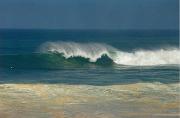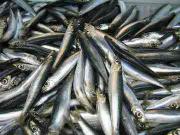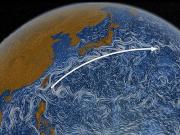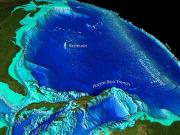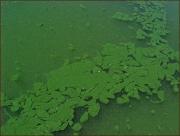Radio Program
Our regular Science and the SeaTM radio program presents marine science topics in an engaging two-minute story format. Our script writers gather ideas for the radio program from the University of Texas Marine Science Institute's researchers and from our very popular college class, Introduction to Oceanography, which we teach to hundreds of non-science majors at The University of Texas at Austin every year. Our radio programs are distributed at to commercial and public radio stations across the country.
Screeching, prancing, soaring seabirds are a standard feature of just about any day at the beach. Gulls, terns, pelicans, oystercatchers, and many others are common sights on American shorelines. But a recent study says that these birds are becoming a less-common sight around the world.
If you ever decide to walk America’s coastline, you better make sure someone’s taking care of your dog — it’s going to take a while. According to NOAA — the National Oceanic and Atmospheric Administration — the ocean coastline stretches for 88,633 miles.
Actually, NOAA has two measurements for the coastline. The other yields a length of just 12,383 miles. And both measurements are a bit arbitrary. That’s because there’s no internationally recognized definition of what a coastline really is.
The whale shark spends some of its day cruising through the warm water near the ocean surface. When it’s time to eat, though, it sometimes heads for the fridge — depths of a quarter of a mile or greater, where the water is much colder. That isn’t much of a problem because the shark is a gigantotherm — an organism that relies on its great size and a special anatomy to keep it warm.
When a wave breaks gently on the shore, it may be completing a journey of many days and hundreds or thousands of miles. Yet the water that comes ashore has journeyed no more than a few feet and a few seconds. That’s because a wave transmits only energy, not water.
To visualize how that works, think about two people holding opposite ends of a long rope. One person snaps her end of the rope, creating a wave. The wave moves along the full length of the rope, perhaps jiggling the hand of the person on the other end. But when the wave is through, the rope is right where it started.
It may sound a bit obvious, but some recent research says that one way to stop a fishery from collapsing is to quit fishing there for a while. What’s not so obvious, though, is that doing so would have little impact on the overall catch.
The researchers looked at groups of forage fish — small fish like sardines, anchovies, and herring. These species are important to the fishing industry, but they’re also key links in the ocean food chain. They’re a major food source for larger fish, whales, birds, and other creatures.
The oceans are full of surprises. Listen to this description, for example, and see if you can guess what type of fish it is. An adult is about three feet long, fairly shy, and not a very good swimmer. It has a wide mouth full of small teeth, but it lies in ambush and waits for food to swim right on in. And when it’s in trouble, it puffs up like a balloon.
Got it? The answer, of course, is a shark — a swell shark. It’s found in coastal Pacific waters from central California to southern Mexico, and perhaps off Chile as well.
For most of us in the United States, no ocean current is better known than the Gulf Stream. It begins in the Gulf of Mexico, flows up the eastern seaboard, then crosses the Atlantic to Europe. Its warm waters help regulate temperatures across two continents.
Seaweed is hot. Or, if you prefer, you can have it cold. No matter how you like it, though, seaweed is becoming more popular in the United States and other countries around the world. It’s served in salads and main courses, and it’s ground up to use as seasoning. And an extract from seaweed forms a thickener in gelatins and a binder in toothpaste.
But the name “seaweed” is a bit misleading. That’s because, unlike land-based weeds, it doesn’t have roots or stems or leaves. Instead, seaweed is a type of algae. It absorbs nutrients and water directly from the saltwater around it.
The ocean surface is bumpy. Big mounds of water can rise up to hundreds of feet high. No one notices them because they’re many miles wide, so their slopes are gentle. They are detected, though, by orbiting satellites. And scientists can use the satellite measurements to learn about what’s far below the bumps — on the ocean floor.
Iron is crucial to your health. It helps carry oxygen through the body, so if you don’t have enough, you feel tired and sluggish. But too much iron isn’t good, either; in some cases, it can lead to diabetes or even heart failure.
The same thing applies to much of the microscopic life in the oceans: Iron is a key nutrient, but too much of a good thing can be bad. Overdoses of iron in single-celled organisms more than two billion years ago may have slowed the evolution of Earth’s atmosphere.




